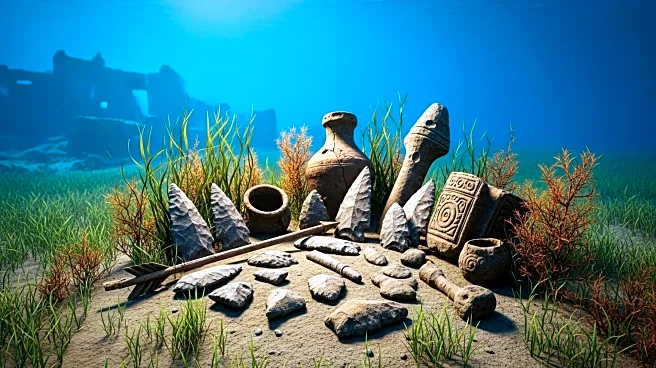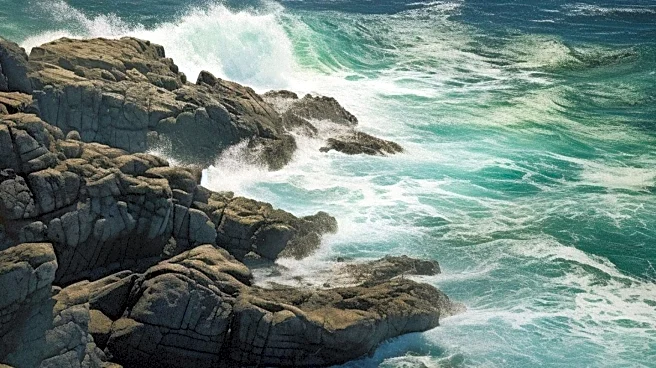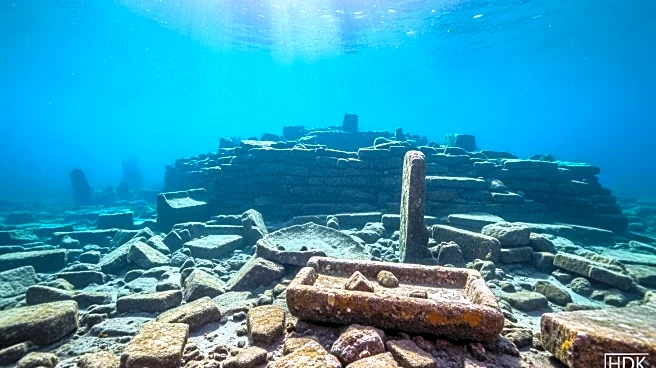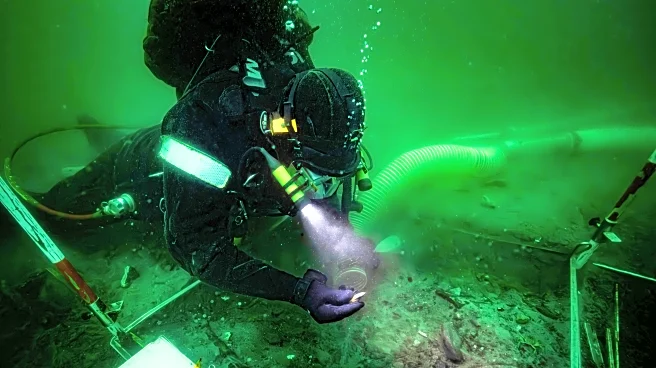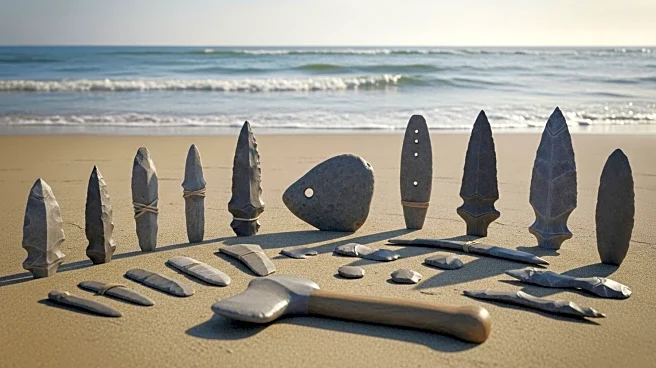What's Happening?
Archaeologists have uncovered an 8,500-year-old Stone Age settlement submerged by rising sea levels in the Bay of Aarhus, Denmark. This discovery is part of a $15.5 million international project funded by the European Union to map submerged landscapes in the Baltic and North Seas. The project aims to explore lost Mesolithic settlements as offshore wind farms expand. The site has yielded animal bones, stone tools, and worked wood, preserved in an oxygen-free environment. Researchers are using dendrochronology to date submerged tree stumps, providing precise data on historical sea level changes.
Why It's Important?
The discovery of the submerged settlement offers valuable insights into how ancient societies adapted to rising sea levels, a topic of increasing relevance as modern climate change accelerates. Understanding past human responses to environmental changes can inform current strategies for managing coastal areas and mitigating the impacts of sea level rise. The research highlights the importance of preserving underwater archaeological sites, which serve as time capsules of human history. The findings may also contribute to broader discussions on climate resilience and adaptation strategies in the face of ongoing environmental challenges.
What's Next?
Further excavations are planned in the Bay of Aarhus and other locations in the North Sea. Researchers hope to uncover more artifacts, such as harpoons and fishing structures, to build a comprehensive picture of Stone Age coastal life. The project will continue to use advanced techniques like dendrochronology to refine the timeline of sea level changes. As the research progresses, it may influence policy decisions related to coastal management and heritage preservation, emphasizing the need to protect submerged archaeological sites from modern development.
